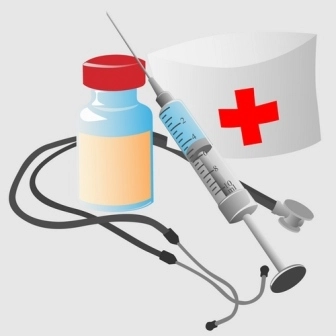
Hint: Check claims for accuracy before you submit in 2020.
As the feds streamline the claims process for overburdened Part B providers, all the paperwork rollbacks may offer your practice much needed relief. However, don’t be lulled into a false sense of security by these administrative simplifications — accurate notes still matter, claims audits aren’t going away, and repayment is expected.
Context: On Dec. 19, the Centers for Medicare & Medicaid Services (CMS) released its “2019 Medicare Fee-for-Service Supplemental Improper Payment Data” as part of its Comprehensive Error Rate Testing (CERT) program. The report breaks down the biggest errors among Medicare claims and covers the causes of the improperly paid charges.
Good news: CMS’ efforts to curtail incorrect coding are working. Since 2014 the improper payment rate has steadily declined, and last year’s numbers went down significantly. The improper payment rate in 2019 was 7.3 percent, down from 8.12 in 2018, while improper payment amounts decreased from $31.6 billion in 2018 to $28.9 billion last year.
Part B stats: According to the CERT report, Medicare Part B’s overall impact to the improper payment rate dropped from 2018 to 2019. Last year, the government discovered an 8.6 percent improper payment rate in Part B claims, down from 10.7 percent in 2018. As a piece of the Medicare improper payment rate pie, Part B’s error rate went from an overall error rate of 33.1 percent in 2018 to 29.9 percent in 2019 — a significant decline, the CERT data suggests.
The reduced rates are a boon for everyone, according to agency guidance. “Every dollar spent inappropriately is one that should have been used to benefit patients,” explains CMS administrator Seema Verma in a release. The agency “is pulling every lever at its disposal to safeguard precious resources and direct them to those who truly need them — both today and in the future.”
Note Inaccuracies Remain Primary Issue
Insufficient documentation was the chief cause leading to improper payments across the Medicare spectrum. In Part B claims, 31.3 percent of improper payments were due to multiple claims errors while 30.6 were caused by missing or inadequate records, notes Figure 9 in the report.
CMS also used the CERT data to determine which specialists produced the most Part B errors. According to the report, internal medicine ranked first in 2019 with over $1 billion in improper charges and an error rate at 13.5 percent. Clinical labs and family practitioners rounded out the top three.
If you’ve been burned by documentation blowups in the past, 2020 is a great time to realign your protocols with those of Medicare and put medical records accuracy at the top of your to-do list. You should always pay attention to the medical documentation, so you can avoid making errors in your own practice, instructs Christina Neighbors, MA, CPC, CCC, coding quality auditor for Conifer Health Solutions, Coding Quality & Education Department, and member of AAPC’s Certified Cardiology Coder steering committee.
Look at some examples of what CMS considers “insufficient documentation” and check for these types of inaccuracies in your claims audits:
Review more of Medicare’s medical record documentation requirements at www.cms.gov/Outreach-and-Education/Medicare-Learning-Network-MLN/MLNProducts/Downloads/CERTMedRecDoc-FactSheet-ICN909160.pdf.
CMS Targets 3 Areas to Reduce Improper Payments
There are problem zones that add substantially to the improper payment rate annually, according to the Centers for Medicare & Medicaid Services (CMS). By nipping those issues in the bud with “corrective actions,” Medicare cut down improper payments by billions, suggests the agency in a release.
1. Home health: For example, CMS credits the Targeted Probe & Educate (TPE) program as being a major factor in reducing home health improper payments by $5.32 billion between 2016 and 2019.
2. Part B services: “Clarification and simplification of documentation requirements for billing Medicare under our Patients Over Paperwork initiative” helped cut Part B services like office visits and lab work by $1.82 billion last year, CMS says.
3. DMEPOS: Though the agency doesn’t go into detail, it implies that various “corrective actions” in the DMEPOS space contributed to the $1.29 billion decrease between 2016 and 2019, a release notes.
Tip: Keep in mind that just because documentation supports the level of service billed, the coder or biller must be sure that it’s medically necessary to report that level of service, says Gina Vanderwall, OCS, CPC, CPPM, financial counselor with Finger Lakes Ophthalmology of Canandaigua, New York. “One can have excellent documentation that supports a higher level of service, but medical necessity must be taken into consideration as well. You can’t always bill the higher level of service simply because your documentation has all the bullet points checked,” she adds.
California and Texas Bump Up the Overall Improper Payment Rate
Among the unadjusted impact stats for Medicare Parts’ A and B with home health and hospice included, Texas ranked first at a 9.7 percent error rate while California was second at 9.1 percent. Florida rounded out the top three at 6.8 percent, and Ohio and New York tied for fourth at a 4.6 percent error rate overall.
Resource: Review the CERT report at www.cms.gov/files/document/2019-medicare-fee-service-supplemental-improper-payment-data.pdf.
